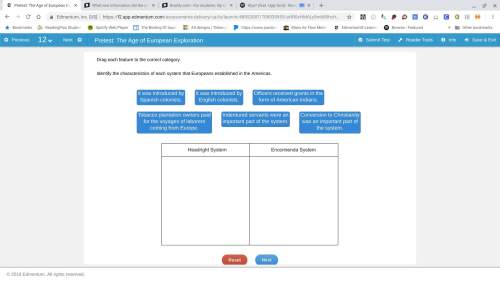
Social Studies, 26.11.2020 01:00 edwardo99
god help me1111
PUT THIS IN YOUR OWN WORDS
1. Why do you think we do not know the Freedom Seeker’s name?
2. Why is it important to know that this Freedom Seeker had only recently arrived from Africa?
3. What challenges did the Freedom Seeker likely face during his escape?
text: In late 1752 a young African man escaped from an enslaver’s estate and vanished into the woods. We don’t know his name. We don’t know what happened to him. But what we can piece together about his life reveals an important part of the city’s past. In the 1600s and 1700s, New York’s economy relied on enslaved labor. What can the records about a person escaping slavery teach us about life in this slave city?
Very few original images of enslaved people survive today. Enslaved people themselves were denied the resources to produce and preserve paintings or drawings, while those who could had little interest in portraying captives.
The typical image of American slavery is set on a southern plantation. But slavery was also an integral part of life in the north. For nearly 200 years, enslaved people in New York provided labor to grow crops, move goods, and run households. At the time the Freedom Seeker made his escape in 1752, enslaved people made up at least a quarter of the workforce in the city and perhaps half of those who worked in outlying agricultural areas.
Like millions of others, this Freedom Seeker was carried to America from Africa in the belly of a slave ship. His enslaver’s advertisement reports that the young man had only recently been “imported” at the time of his escape in 1752. This might mean he arrived on the Wolf, a Livingston-funded slave ship that set sail in September of 1749, bound for the “Coast of Africa.” The Wolf pulled back into New York harbor in early May of 1751. This Freedom Seeker from Livingston’s enslavement was possibly among them.
The first clues about enslaved life can be found in the advertisement itself. Advertisements like this provide rare information about individual fugitives. Enslavers gave meticulous descriptions, hoping that “slave catchers” would be able to identify and return Freedom Seeker. Under almost no other circumstances did writers record such detail about enslaved people in New York.
The ad reports that the missing man had only recently arrived from Africa at the time of his escape. Following New York’s suspected slave insurrection of 1741, enslavers hoped that captives fresh from Africa would be more isolated and disconnected—and therefore more docile—than enslaved people who had already been in the Americas for a time.
Philip Livingston suspected the escaped man was hunkered down “in the Woods near Harlem.” While the wilderness of northern Manhattan made a good hideout, the high reward probably encouraged many New Yorkers to search for him. With the water too cold for swimming, the Freedom Seeker’s only options to escape the island would be to steal a boat or slip across a bridge.
What was daily life like for the Freedom Seeker and other enslaved people in New York? Written records are few, but a pivotal archaeological discovery offers some clues about the experience of enslaved people. In 1991, during excavation for new offices, workers uncovered the African Burial Ground, a long-forgotten cemetery now buried many feet beneath the streets of lower Manhattan. Archaeologists unearthed the remains of 419 individuals at the African Burial Ground—a fraction of the 15,000 believed to be buried there.
Though enslaved people in New York faced brutal conditions and harsh treatment, they did all they could to preserve their own humanity. They created loving family relationships, retained elements of traditional African culture, and challenged their captivity. Resistance took many forms, from refusing to work to violent rebellion. Many, like the Freedom Seeker escaping Livingston, resisted by running away.

Answers: 2


Another question on Social Studies

Social Studies, 22.06.2019 02:30
What would happen to the tides if there was no moon and no sun in the sky?
Answers: 1

Social Studies, 22.06.2019 13:00
According to this chart, which country is likely to have the most economic freedom with regards to entrepreneurship?
Answers: 1

Social Studies, 22.06.2019 16:30
Kate is 14 years old and just started taking dance classes with her friends at a local dance studio. this is her first time in a dance program, so everything is new to her. her friends convinced her to join the class since they have been enjoying it for a few months. how could the following terms her succeed in the dance class? ● secondary reinforcement ● identity vs. role confusion ● observational learning how could the following terms hinder her success in the class? ● circadian rhythm ● basal ganglia ● vestibular sense
Answers: 2

Social Studies, 22.06.2019 18:40
Which statement is a good description of a model? a) models are a description of nature based only on one or two variables. b) models are testable ideas but they are not very to most people. c) models are a description of nature that predicts more accurately than real events. d) models are an approximiation of a real system that omits all but most essential variables in a system.
Answers: 1
You know the right answer?
god help me1111
PUT THIS IN YOUR OWN WORDS
1. Why do you think we do not know the Freed...
1. Why do you think we do not know the Freed...
Questions

Health, 25.04.2021 22:30

Physics, 25.04.2021 22:40







Mathematics, 25.04.2021 22:40



Social Studies, 25.04.2021 22:40


Geography, 25.04.2021 22:40

Mathematics, 25.04.2021 22:40


Mathematics, 25.04.2021 22:40


Mathematics, 25.04.2021 22:40

Mathematics, 25.04.2021 22:40




